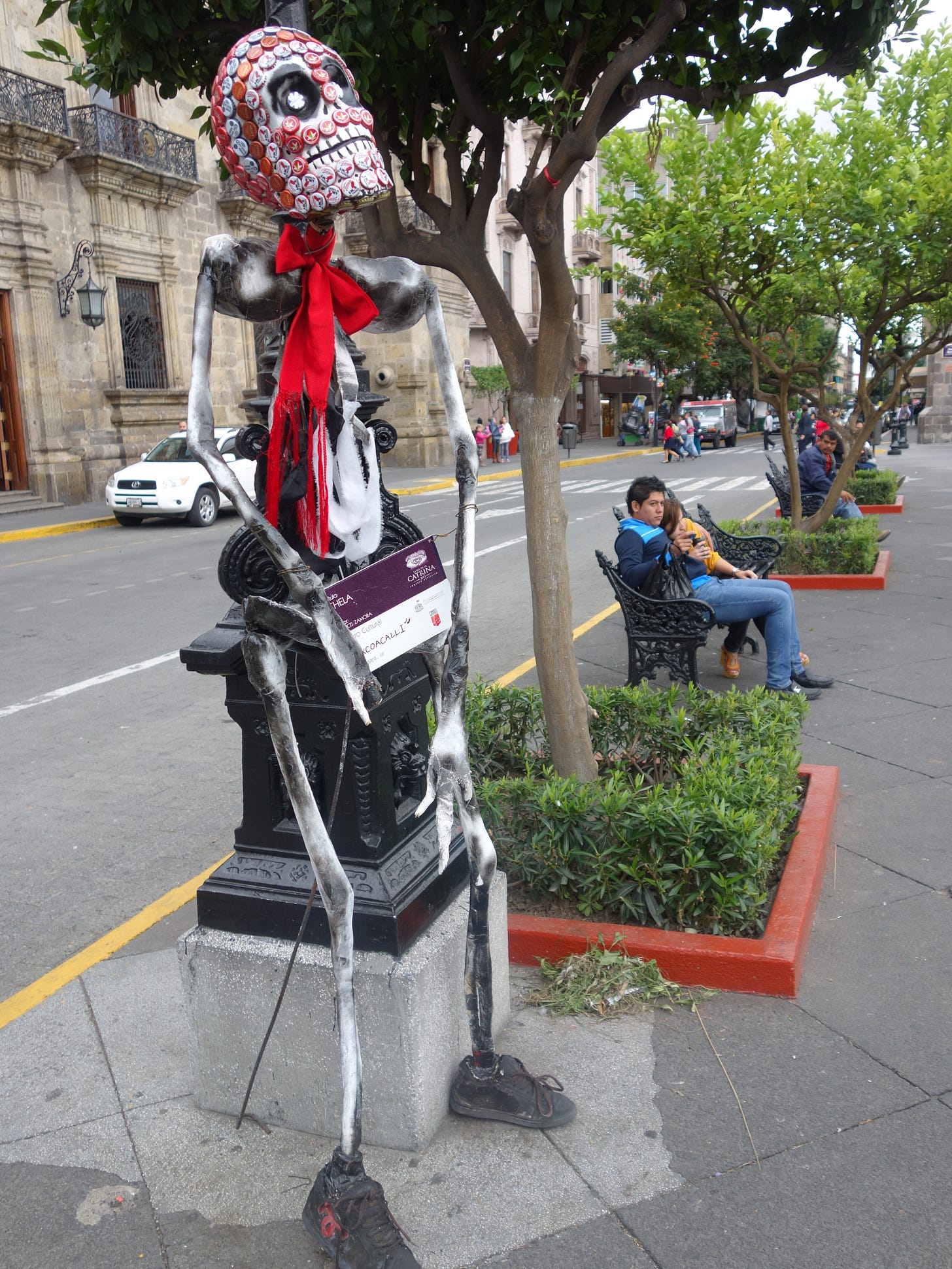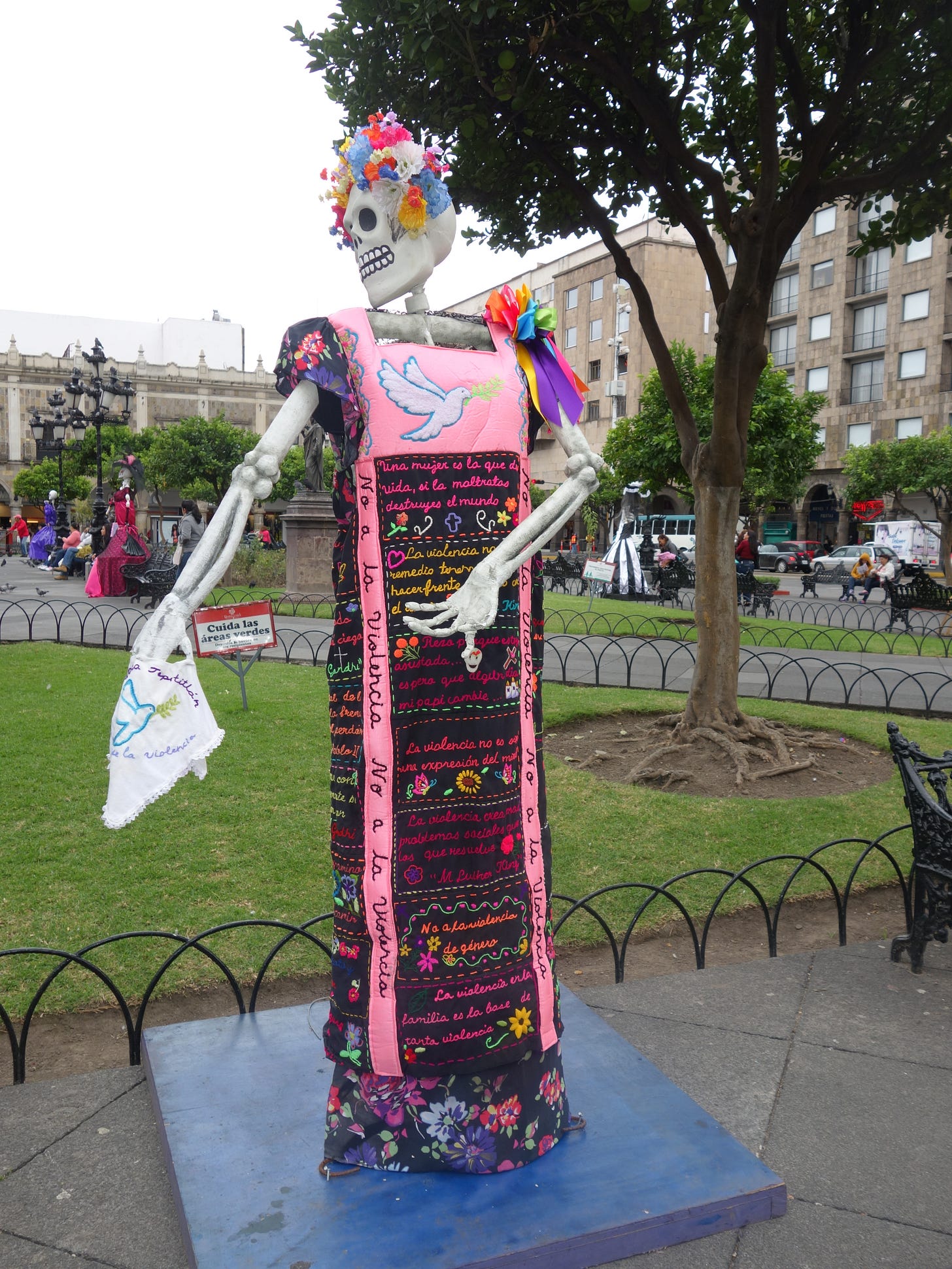WHEN ALL ARE DEAD BUT NOT GONE
Juan Rulfo's classic tale was not an easy read but I couldn't put it down.
I started this project as my personal deep dive into literature in translation. For too long I’d been frolicking in a world determined and hemmed in by the English language. My early life was spent immersed in the Encyclopedia Brittanica and my fascination with the English language led me to a degree in English literature. It’s so easy to assume that the greatest achievements in literature took place in the English world when a quick look at history tells us that English as a language of communication is relatively new when pitted against the history of the universe.
As I said in my first post, NOT LOST IN TRANSLATION, in the years I attended India’s Jaipur Literature Festival, I’d always been uncomfortable about how regional language events often received poor attendance whereas discussions in English (unless there was star power during the presentation in the regional language) always drew the maximum crowds.
The lingua franca of the world has always been the language of commercial heft, according to British linguist David Crystal, and in the last several hundred years, that language has been English. Art and technology also played a role in cementing the role of English. Crystal remarks that the artistic and commercial development of cinema from 1895 also helped establish English around the world. When sound was added to film in the 1920s, spoken English suddenly dominated the movie world.

Given the role of English in this global world, it takes a certain amount of effort for institutions and lay people to make the effort to reach across boundaries to read widely. I take pleasure in the many developments of the last decade in the literary world to change the status quo.
Last week, International Booker Prize announced its 2022 shortlist and the judges chose some authors who were translated into English for the first time. Tomb of Sand, the novel in Hindi, is particularly exciting in this regard; it's heartwarming to know that if the book wins, the prize will be shared equally by writer Geetanjali Shree and her translator Daisy Rockwell.
Today, I see how words and ideas first penned in other languages are finally receiving their due. Their significance is greater still when we consider my pick this week by the late Juan Rulfo. Translated from the Spanish by Margaret Sayers Peden, Pedro Páramo is considered a classic. I confess that I’d never have bought it had I not noticed the foreword by the late Gabriel García Márquez on its cover.

Even now, after reading it once I wish to go back to my notes before rereading it at least a couple of times. I’ve also been consulting online help in order to corroborate facts and ascertain that I understood everything that was going on in this elusive yet gripping little book. When I turned the last page of the novel, I came upon Susan Sontag’s afterword, too.
“Pedro Páramo is a classic in the truest sense. It is a book that seems, in retrospect, as if it had to be written. It is a book that has profoundly influenced the making of literature and continues to resonate in other books.” ~ Susan Sontag
Juan Carlos Rulfo was born in Mexico in 1917. His reputation as one of the greatest writers who ever lived rests on merely two little books—Pedro Páramo and El Llano en llamas. When García Márquez was struggling with his own writing, Rulfo’s Pedro Páramo offered him a way out. Rulfo was also a photographer with a keen interest in recording the lives of indigenous people. I would urge everyone to read BBC’s coverage about this Latin writer.
So I was already a writer with five underground books. For me that wasn’t a problem, since neither then nor ever have I written for fame, but rather so that my friends would love me more, and I believed I had managed that. My great problem as a novelist was that after those books I felt I had driven myself up a blind alley, and I was looking everywhere for an escape route. ~ Gabriel García Márquez
At an uncertain time in García Márquez’s life, his friend dropped off a book at his apartment, saying, “Read this shit and learn!” That book was Pedro Páramo. It changed his life by pointing him towards magical realism and this, in turn, led Gabriel García Márquez to his magnum opus, One Hundred Years of Solitude. After reading García Márquez’s introduction, I realized I must try hard to understand the work and grasp at least a sliver of Rulfo’s vision in writing the book. In the foreword, García Márquez writes about how he had committed the book to memory.
“I could recite the entire book front to back and vice-versa without a single appreciable error, I could tell you on which page of my edition each scene could be found, and there wasn’t a single aspect of its characters’ personalities which I wasn’t deeply familiar with.”~ ~ Gabriel García Márquez
Pedro Páramo tells the story of a young man, Juan Preciado, who goes to Comala, a small town in rural Mexico in search of his long-lost father, Pedro Páramo. The 68 vignettes that make up this novel jump across time and switch narrators and present two main stories.
In the first story, we are in the present and Juan Preciado narrates his journey to Comala after his beloved mother’s death. When Juan arrives in Comala, he is bewildered by the barrenness of the town. He arrives in the blazing heat of the afternoon when he thinks he must hear the sound of children playing as is typical in any Mexican hamlet. Instead he hears strange sounds all around him. He sees spectral beings who seem incomplete and lost. They vanish as swiftly as they appear around him. His stay at the village begins with a meeting with Doña Eduviges Dyada, an old friend of his mother’s, who offers him a room in the back of her empty, dilapidated house. Even she isn’t alive, we discover, and we learn in one of the stories that she has died by suicide.
The second story, set in the distant past and narrated mostly in the third person, takes us deeper and deeper into the depravity of Comala. Pedro Páramo manipulates the people of Comala until he becomes the most powerful man in town.
At the beginning of the novel, Dolores Preciado tells her son to visit Comala to find his father. “Make him pay, son, for all those years he put us out of his mind,” she says before she dies. When Juan meets the burro driver Abundio Martinez on the scorching desert road to Comala, Abundio informs Juan that Pedro Páramo is his father, too. His response to Juan’s question about their father (“Who is he?”) sets the stage for this exasperating novel: “Living bile,” says Abundio Martinez.
Juan Preciado’s descent into hell—for what can be more hellish than Comala?—makes a Night Shyamalan movie feel like Disney art. The depravity of Comala is described in a brilliant and mordacious passage that is so inventive that I will be quoting it in the future. “The town sits on the coals of the earth, at the very mouth of hell. They say that when people from there die and go to hell, they come back for a blanket.”
At just 139 pages, Pedro Páramo is macabre but it made me wonder about the power of the present in my life. Imagine the story of our lives told after we died. Imagine all the people who could talk about us from way back in our past. Imagine the small sins for which we have never atoned, for which confession is owed but never given.





Nice work (once again). He's one tough writer, that's for sure. I really enjoyed the Marquez connection, too - I didn't know anything about that.
Thought provoking read. I liked your comments in the last para. I am reminded of my confessions everyday. "Yani kanicha papani Janmathara kriyanicha, thani thani vinashyanthi prathakshina pathe pathe".